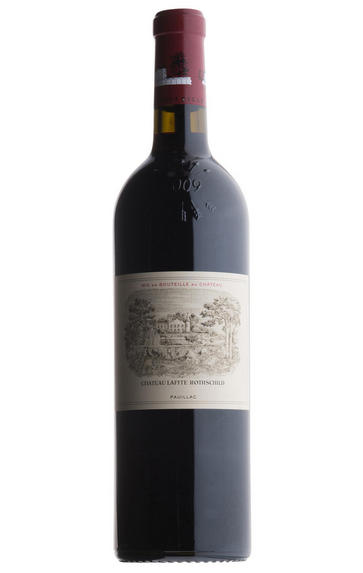
2003 Château Lafite Rothschild, Pauillac, Bordeaux
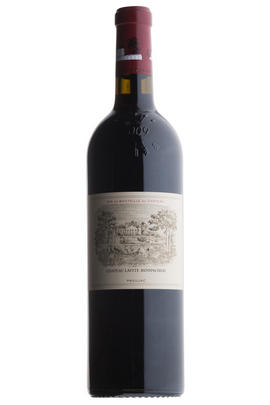
Critics reviews
The 2003 Lafite-Rothschild famously shrugged off the merciless heat of that infamous summer when the temperature at the estate nudged 42° Celsius. It has a lovely bouquet of black plum, pressed iris, a touch of glycerin and (for Lafite) exotic scents of blood orange.
The palate is powerful and intense, as you would expect. There is great depth and volume with glossy black fruit laced with orange zest, smoke and melted tar. You can almost feel the summer in this Lafite-Rothschild, but unlike many of its peers, it has requisite acidity to maintain freshness and avoid cloyingness on the finish.
Whilst not my pick of modern-day Lafites, I have to doff my cap because it was and still is one of the finest Left Banks of the vintage. Tasted at the Lafite-Rothschild 150th anniversary dinner at the estate.
Drink 2020 - 2050
Neal Martin, Vinous.com (July 2018)
Dark crimson. Quite severe and obviously left bank. Strong cassis aromas. A sweet start on the palate. Fine, polished, very classy wine. Obviously elegant and very fresh on the finish. Excellent lift with very finely etched flavours. A prime example of how, unlike the great majority of 2003 red Bordeaux, the best of those grown in Pauillac and St-Estèphe are.
Drink from 2012 onward
Jancis Robinson MW, jancisrobinson.com (November 2013)
The 2003 Lafite Rothschild comes as close to perfection as any of the great Lafites made over the past three decades (1982, 1986, 1996, 2000, 2005, 2008, 2009 and 2010). This sensational effort came in at 12.7% natural alcohol; it is made in the style of one of this estate’s great classics, the 1959.
Composed of 86% Cabernet Sauvignon, 9% Merlot and the rest Cabernet Franc and Petit Verdot, it exhibits a dense ruby/purple colour to the rim and a luxurious bouquet of cedarwood, lead pencil shaving, white chocolate, cocoa and cassis. This noble wine has a bountiful, generous, heady style: fat, rich, opulent and full-bodied with low acidity and stunning seductiveness and complexity.
It is just coming into its plateau of maturity, where it should hold for 20-25 years. This is one of the candidates for the wine of the vintage – make no mistake about that. These are two great successes in this vintage that have aged well and surprised me with their intensity and overall complexity.
Drink 2014 - 2039
Robert M. Parker, Jr., Wine Advocate (August 2014)
I love the nose and spicy and rich, with a tobacco and berry character on the nose and palate. Full-bodied, with soft velvety tannins that give you so much. This goes on and on. Sexy and exciting right now, but leave this for five or six years.
Drink now
James Suckling, jamessuckling.com (March 2011)
About this WINE
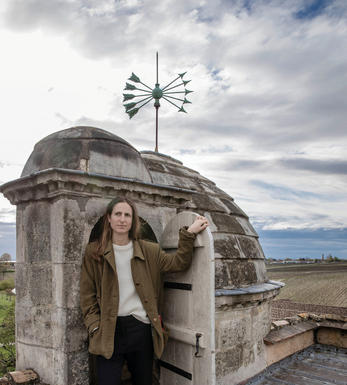
Château Lafite Rothschild
The iconic Château Lafite Rothschild was classified as a first growth in 1855 and has been in the Rothschild family since 1868. Today, Lafite is headed up by Saskia de Rothschild, daughter of long-time steward Baron Eric de Rothschild.
Château Lafite Rothschild is an iconic first-growth property in the Pauillac appellation of Bordeaux, France. It achieved its top-tier rank in 1855 and has been in the Rothschild family since 1868. Today, Lafite is headed up by Saskia de Rothschild, daughter of long-time steward Baron Eric de Rothschild.
The property is located at the northern tip of Pauillac, separated by St Estèphe by marshland and the Jalle de Breuil stream. Two areas of the vineyard are particularly notable: the gravel plateau, which is the heart of the grand vin; and the Plateau de Carruades, from which Lafite’s second wine takes its name. The vineyard is planted mostly to Cabernet Sauvignon (70%), along with Merlot (25%), Cabernet Franc (3%) and Petit Verdot (2%).
A new cellar was completed here in time for the 2011 harvest, with a combination of stainless steel and concrete tanks, of varying sizes. The barrels come from Lafite’s own cooperage, located not far from the property.
In addition to its 110 hectares of vines, the estate has 300 hectares of woods and marshes. The team consider this to be an integral part of the ecosystem.
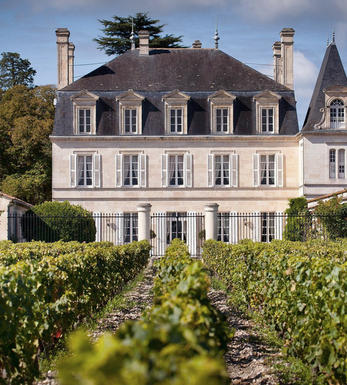
Pauillac
Pauillac is the aristocrat of the Médoc boasting boasting 75 percent of the region’s First Growths and with Grand Cru Classés representing 84 percent of Pauillac's production.
For a small town, surrounded by so many familiar and regal names, Pauillac imparts a slightly seedy impression. There are no grand hotels or restaurants – with the honourable exception of the establishments owned by Jean-Michel Cazes – rather a small port and yacht harbour, and a dominant petrochemical plant.
Yet outside the town, , there is arguably the greatest concentration of fabulous vineyards throughout all Bordeaux, including three of the five First Growths. Bordering St Estèphe to the north and St Julien to the south, Pauillac has fine, deep gravel soils with important iron and marl deposits, and a subtle, softly-rolling landscape, cut by a series of small streams running into the Gironde. The vineyards are located on two gravel-rich plateaux, one to the northwest of the town of Pauillac and the other to the south, with the vines reaching a greater depth than anywhere else in the Médoc.
Pauillac's first growths each have their own unique characteristics; Lafite Rothschild, tucked in the northern part of Pauillac on the St Estèphe border, produces Pauillac's most aromatically complex and subtly-flavoured wine. Mouton Rothschild's vineyards lie on a well-drained gravel ridge and - with its high percentage of Cabernet Sauvignon - can produce (in its best years) Pauillac's most decadently rich, fleshy and exotic wine.
Latour, arguably Bordeaux's most consistent First Growth, is located in southern Pauillac next to St Julien. Its soil is gravel-rich with superb drainage, and Latour's vines penetrate as far as five metres into the soil. It produces perhaps the most long-lived wines of the Médoc.
Recommended Châteaux
Ch. Lafite-Rothschild, Ch. Latour, Ch. Mouton-Rothschild, Ch. Pichon-Longueville Baron, Ch. Pichon Longueville Comtesse de Lalande, Ch. Lynch-Bages, Ch. Grand-Puy-Lacoste, Ch, Pontet-Canet, Les Forts de Latour, Ch. Haut-Batailley, Ch. Batailley, Ch. Haut-Bages Libéral.
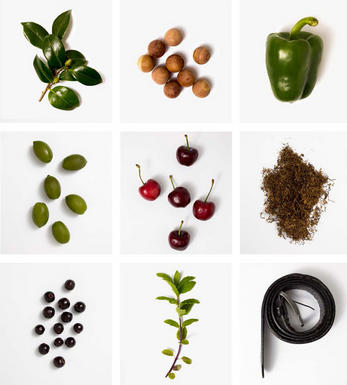
Cabernet Sauvignon Blend
Cabernet Sauvignon lends itself particularly well in blends with Merlot. This is actually the archetypal Bordeaux blend, though in different proportions in the sub-regions and sometimes topped up with Cabernet Franc, Malbec, and Petit Verdot.
In the Médoc and Graves the percentage of Cabernet Sauvignon in the blend can range from 95% (Mouton-Rothschild) to as low as 40%. It is particularly suited to the dry, warm, free- draining, gravel-rich soils and is responsible for the redolent cassis characteristics as well as the depth of colour, tannic structure and pronounced acidity of Médoc wines. However 100% Cabernet Sauvignon wines can be slightly hollow-tasting in the middle palate and Merlot with its generous, fleshy fruit flavours acts as a perfect foil by filling in this cavity.
In St-Emilion and Pomerol, the blends are Merlot dominated as Cabernet Sauvignon can struggle to ripen there - when it is included, it adds structure and body to the wine. Sassicaia is the most famous Bordeaux blend in Italy and has spawned many imitations, whereby the blend is now firmly established in the New World and particularly in California and Australia.


Buying options
Add to wishlist
Description
The 2003 Lafite-Rothschild famously shrugged off the merciless heat of that infamous summer when the temperature at the estate nudged 42° Celsius. It has a lovely bouquet of black plum, pressed iris, a touch of glycerin and (for Lafite) exotic scents of blood orange.
The palate is powerful and intense, as you would expect. There is great depth and volume with glossy black fruit laced with orange zest, smoke and melted tar. You can almost feel the summer in this Lafite-Rothschild, but unlike many of its peers, it has requisite acidity to maintain freshness and avoid cloyingness on the finish.
Whilst not my pick of modern-day Lafites, I have to doff my cap because it was and still is one of the finest Left Banks of the vintage. Tasted at the Lafite-Rothschild 150th anniversary dinner at the estate.
Drink 2020 - 2050
Neal Martin, Vinous.com (July 2018)
wine at a glance
Delivery and quality guarantee